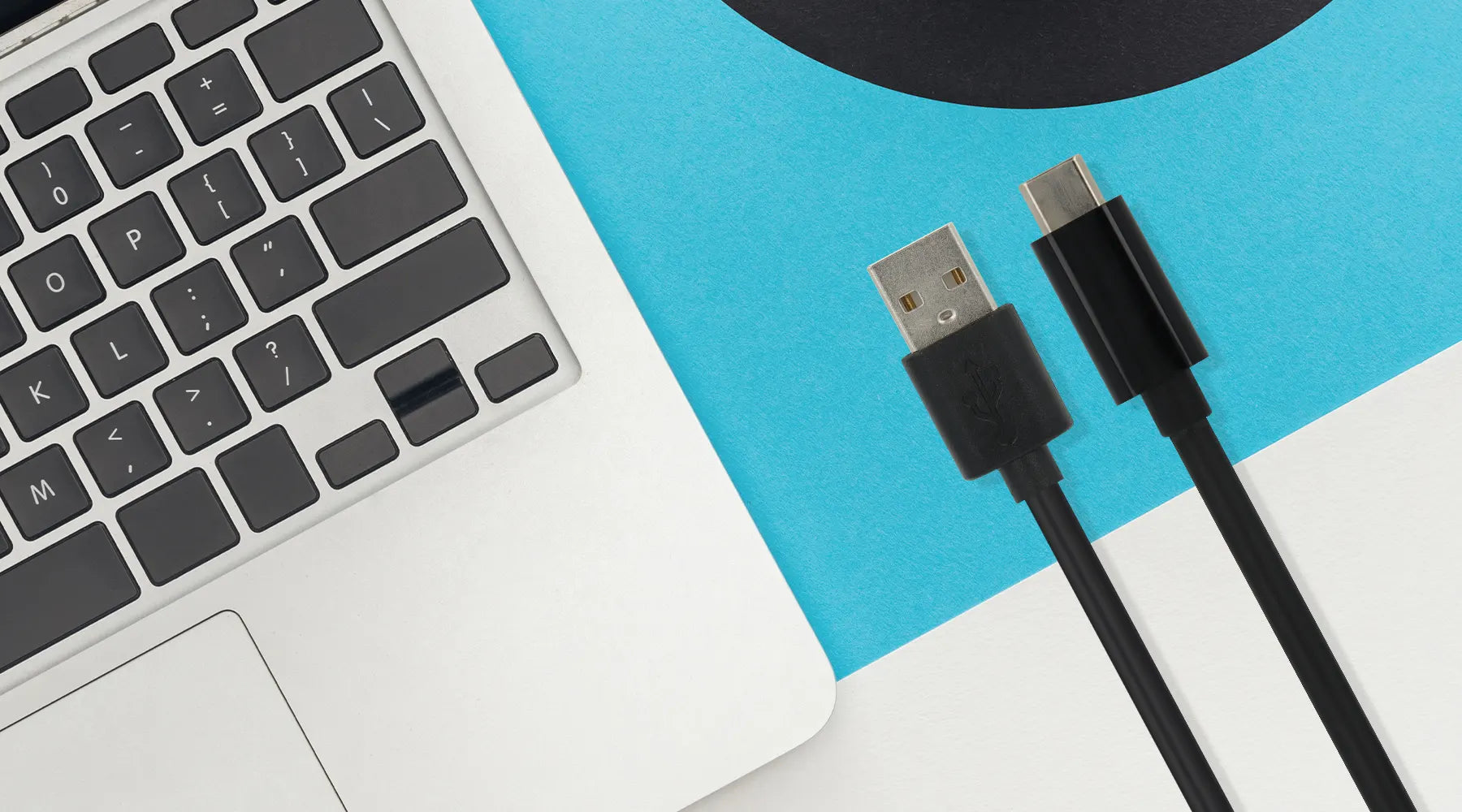Why Is USB-C Better Than USB-A?

It’s as classic a tech comparison as there ever has been – which is the better solution, USB-A or USB-C?
For years, USB-A could be found as the standard connection port on most new laptops and PCs. Now, with USB-C’s advanced capabilities, more and more host systems and devices are supporting the more modern connection type. That said, with USB-A being the front runner for so long, many legacy systems like older laptops still rely on the older connection type for everyday use.
For some, upgrading to USB-C means outright updating your host system or doing away with many of your regularly used devices and peripherals. We know this can be a daunting change, but we believe that the upgrade is worth the benefits. There are a few things you can do in the interim to help bridge the gap, here are our thoughts on how USB-C far outstrips its predecessor, and why the upgrade is worth the investment.
What do they do?
Most people are already familiar with USB ports but because USB Type-A and USB Type-C are the two most common forms of USB connections, understanding the differences between the two is crucial for determining the capabilities and limitations of your peripherals and devices.
At the end of the day, these connections are often presented as providing the same underlying processes: data transfer and charging. However, there are a few reasons why the latest addition to the USB family is the clear frontrunner.
What about USB-B?
Before we jump further into the distinctions that landed USB-C at the top of the common connection food chain, let’s first address the elephant in the room. What happened to USB-B? Type-B has three different connector variations Type-B, Mini-B and Micro-B.
Mini and Micro B was and still are regularly used for connections to devices like older smartphones and charging low power devices such as wireless speakers. Type-B is also used for devices like printers & scanners. Type-A connections were designed more specifically for connection to a host machine such as your laptop or PC.
With Type-C being able to accomplish both, in addition to being reversible and more reliable it quickly outpaced USB-B as newer smartphones phased in the USB-C connector type for charging and data transfer.
What’s the difference?
Though these connector types may provide the same functions, there are clear distinctions in their physical form and technical capabilities.
USB-A
The most familiar USB connector to the average consumer, with its classic rectangular port and pin connectors on the bottom side. With this configuration, the connection will only work if the cable is inserted correctly. Though USB-C has introduced a downturn in use for this old standard, it is still common to see USB Type-A ports on newly released devices due to the countless number of peripherals that still use this connection type.

USB-C
Well on its way to becoming the new standard for consumer tech products, nearly all new laptops, tablets, and docks contain USB-C ports. USB-C is more compact than its predecessors, reversible in connectivity (vertical orientation doesn’t matter for a USB-C connection), and compatible with a number of connection types like USB-A, HDMI, Thunderbolt™ 3, etc. Also, due to power delivery support, charging capabilities and transfer speeds are faster.

Physical differences
Right off the bat, USB-A and USB-C come with different connector types, making them easy to distinguish. USB-A connectors are easily identified by their flat rectangular connector whereas USB-C connections feature an oblong shape resembling a significantly smaller rectangle with rounded sides.
USB-A (USB 3.0 and up)
Theoretically, USB-A cables have no true “maximum”, however cable lengths that extend past 3 meters, or about 10 feet, will begin to see signal degradation.
USB-C (USB 3.1 Gen 1)
The USB Implementers Forum (USB-IF) indicates that these cables should be at most 2 meters long, with cables offering higher transfer speeds up to 10Gbps capping out at 1 meter (around 3 feet).
USB 3.0? USB 3.1 Gen 1?
To break things down to a more straightforward level, these designations simply indicate the progression of advancing versions of USB in terms of power and data transfer capability. Both USB-A and USB-C can support USB 2.0 to 3.2, which supplies a lot of the confusion when determining the right specs or corresponding cable type you might need for your connection.
For a thorough breakdown of each stage of USB development, check out our blog on Everything You Need to Know About USB-C.
What about docking stations?
With a professional quality dock or USB hub, you can transform a simple host system into a powerful workstation, so it’s no surprise that USB port configuration is a hot button topic in terms of determining which docking station or cable solution is right for you.
USB-C’s newer generations can support USB hubs that have multiple USB ports and support multiple hi-speed USB-A devices simultaneously. This is not always the case with a USB-A hub that also has many USB-A ports as the limitations inherent in USB Type-A connections may cause peripheral performance degradation.
For example, let’s say you have a USB-A to 5 port USB-A hub. You’ve attached a flash drive to transfer video files to your host machine, but you also have connected: a keyboard, mouse, headset, and a printer.
With this setup, the flash drive device may suffer slower performance with these peripherals in use because you can still hit data bandwidths if multiple devices are connected. USB-A technology has come a long way to minimize this type of issue, but it can still occur. USB-C docks are very unlikely to encounter the same bandwidth cap.
Fortunately, regardless of your choice in dock setup, VisionTek has a docking station solution that is right for you. Filter through your desired ports, price, and power supply here.
So why is it better?
When it comes to true specifications, USB-C simply has better data transfer rates, symmetry in its connection to help avoid frustration and broken connections, and the ability to charge large electronics. In addition USB-C allows for greater power transfer speeding up the process of charging your devices.
Though tons of host machines and devices still support USB-A, these connections will eventually be phased out (though likely not for years in some cases) in favor of the superior USB-C connection type. Luckily, adapters can be used to help bridge the technological gap if your favorite peripherals aren’t yet compatible with this new standard.
To find the perfect adapter for your USB needs, check here

